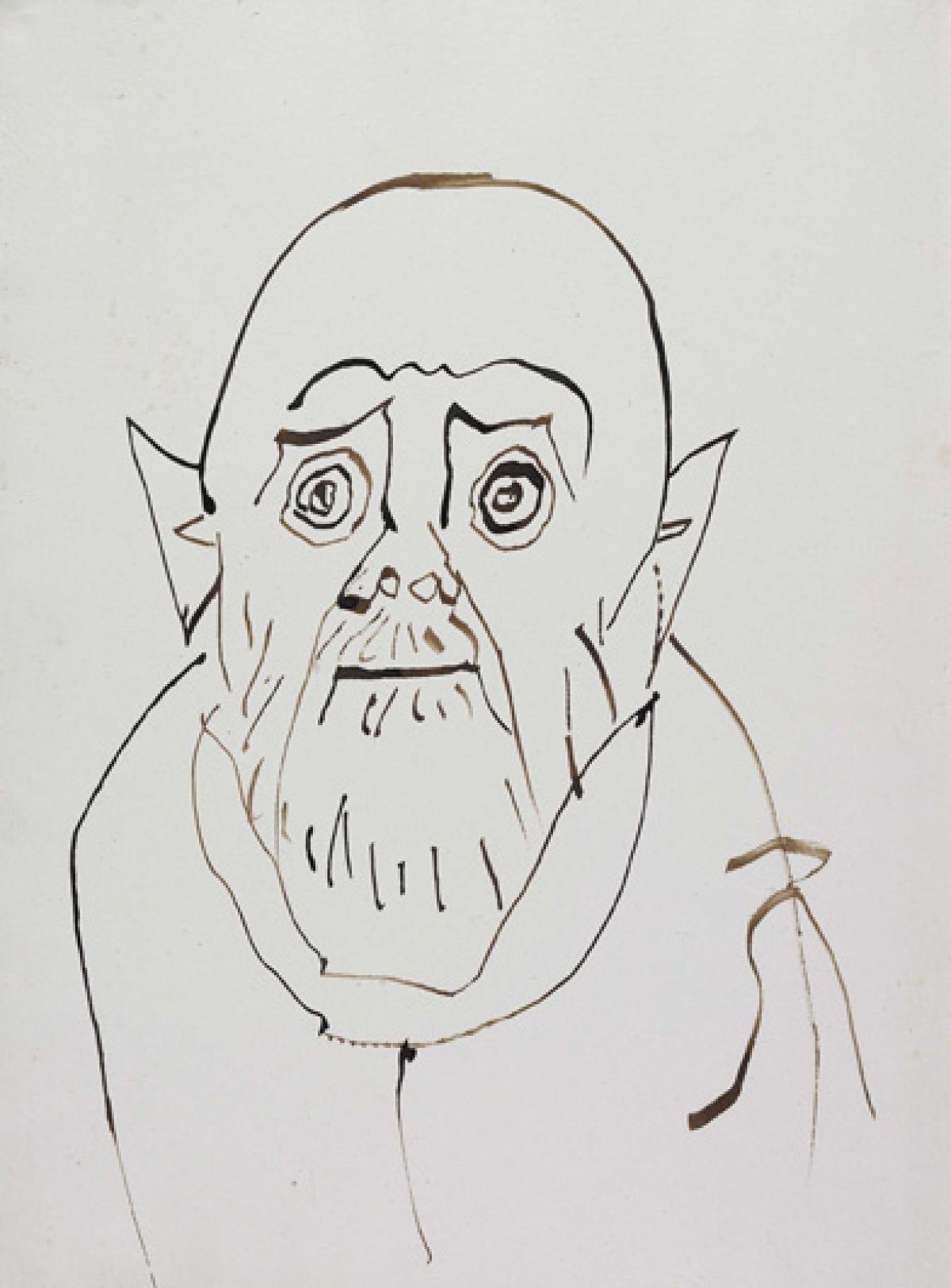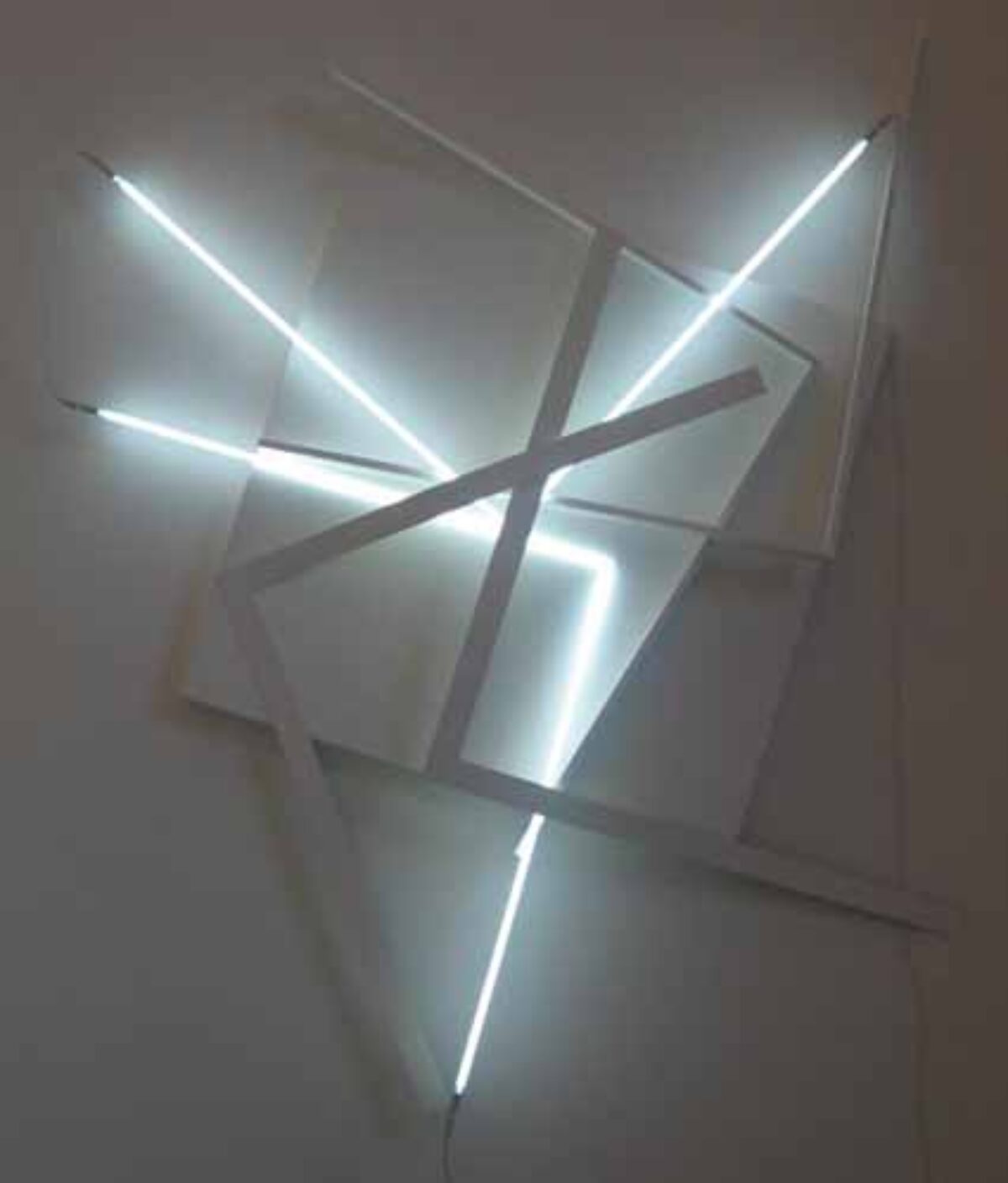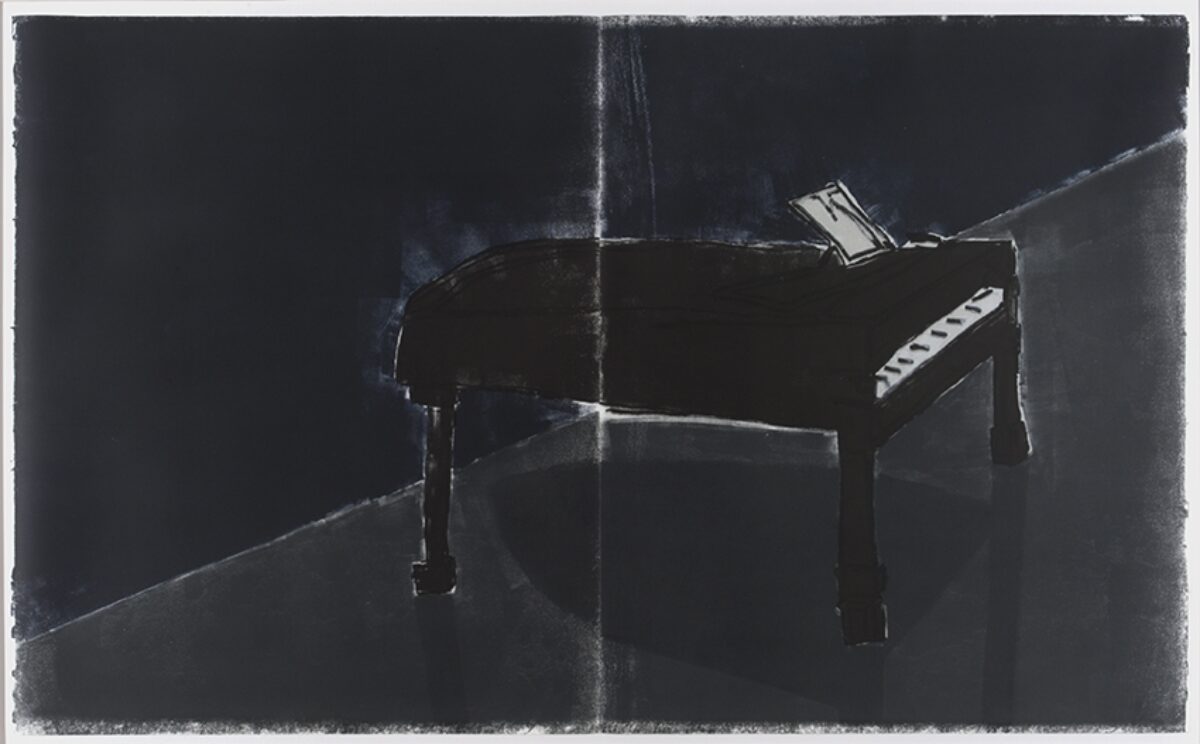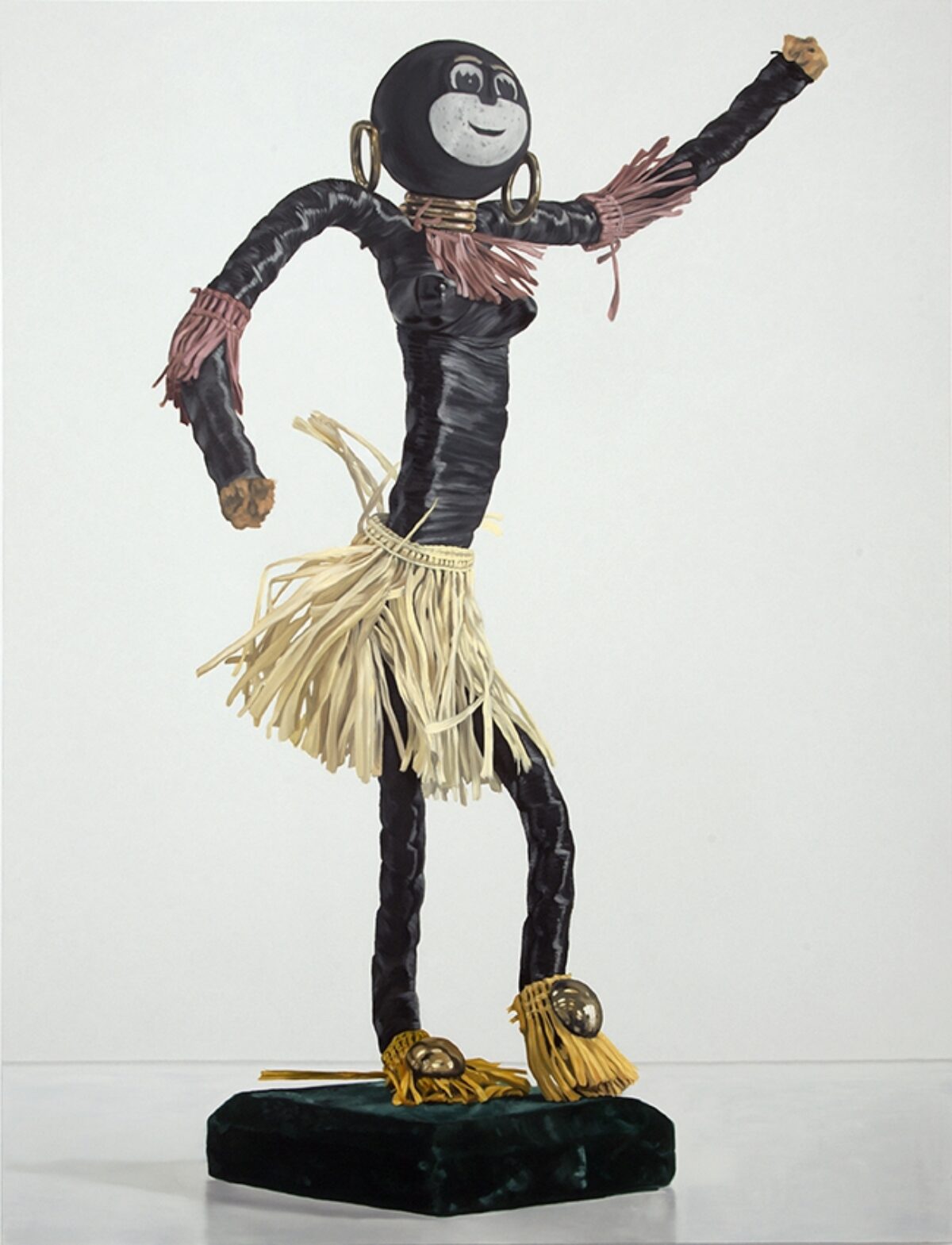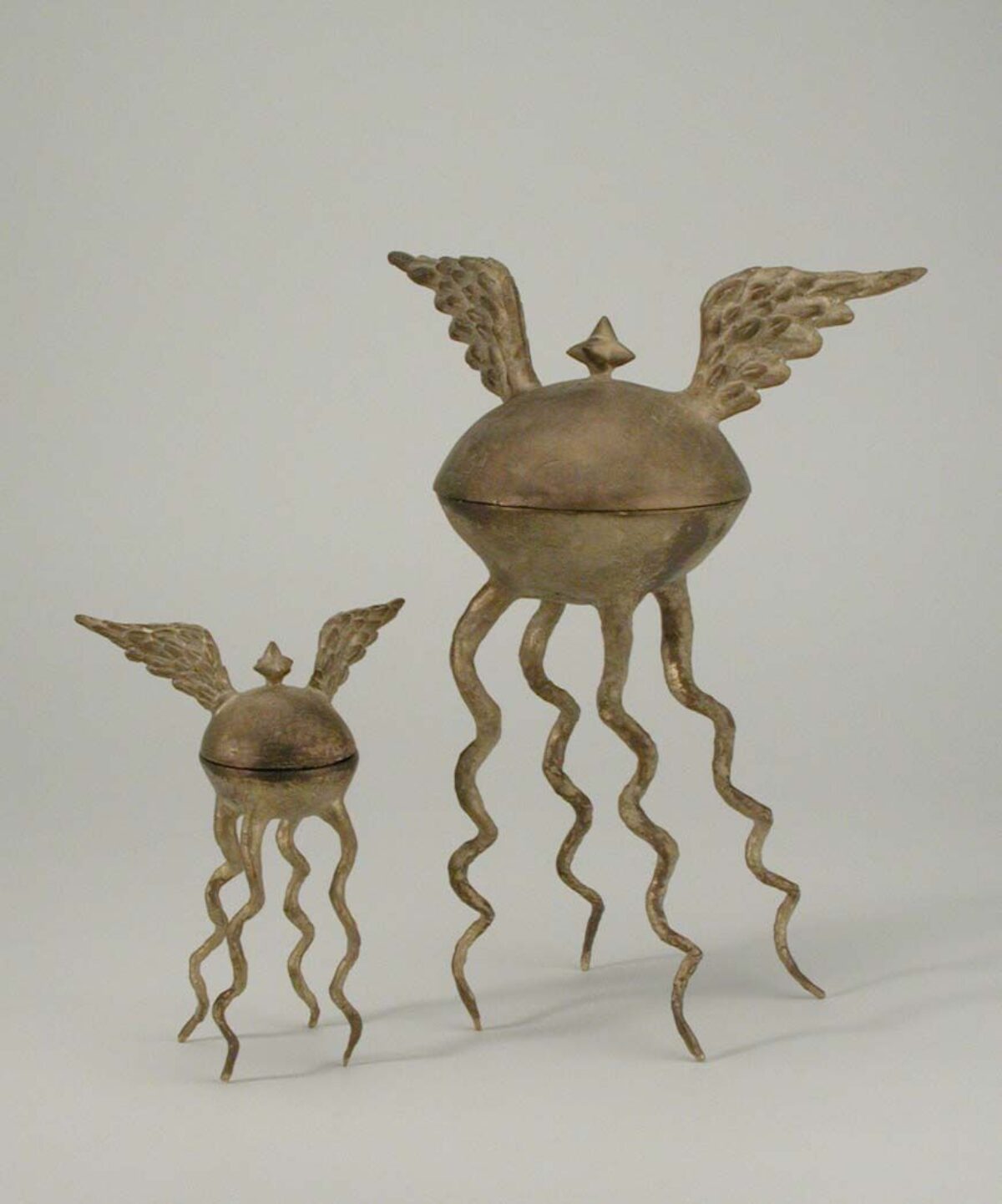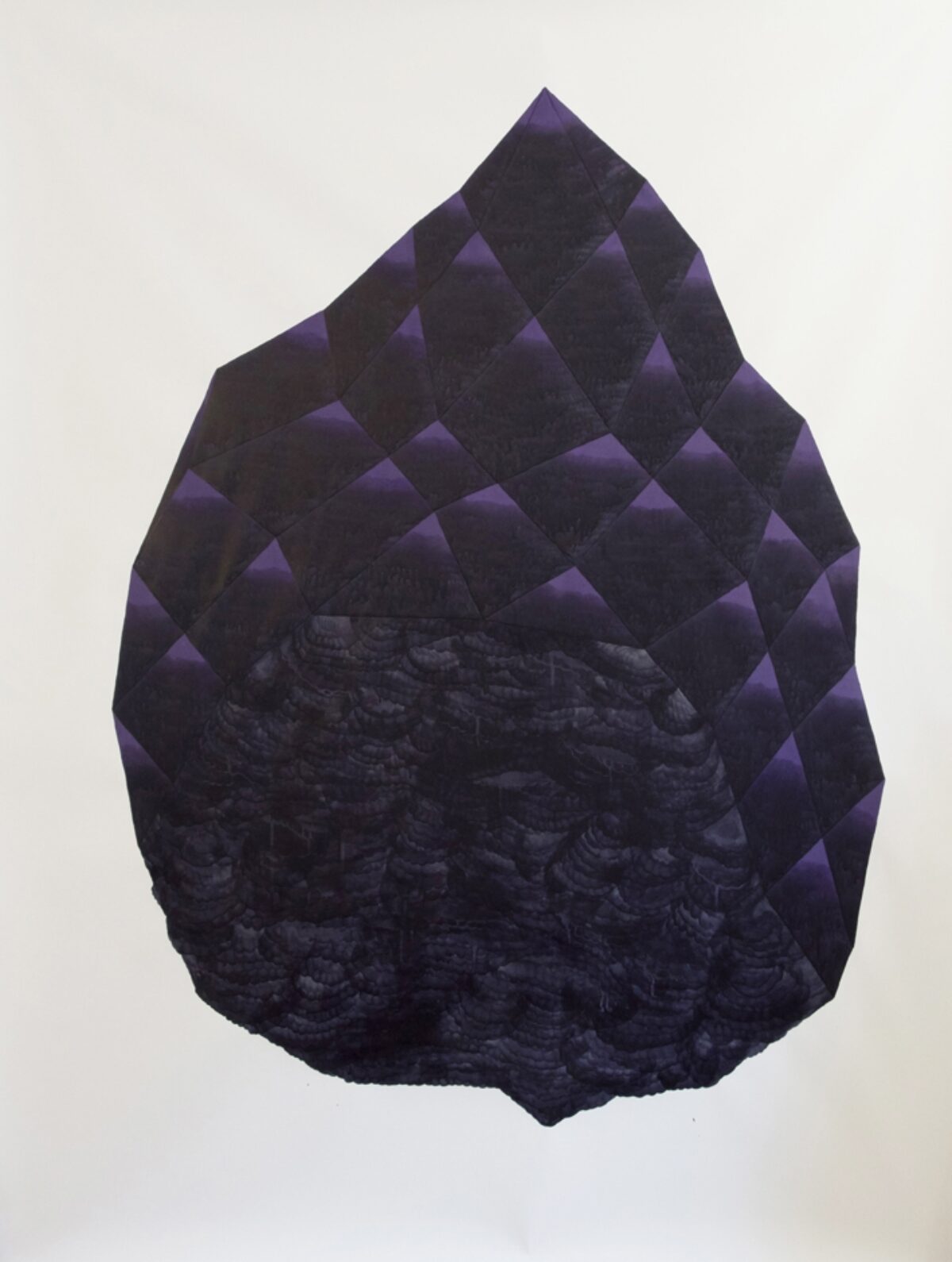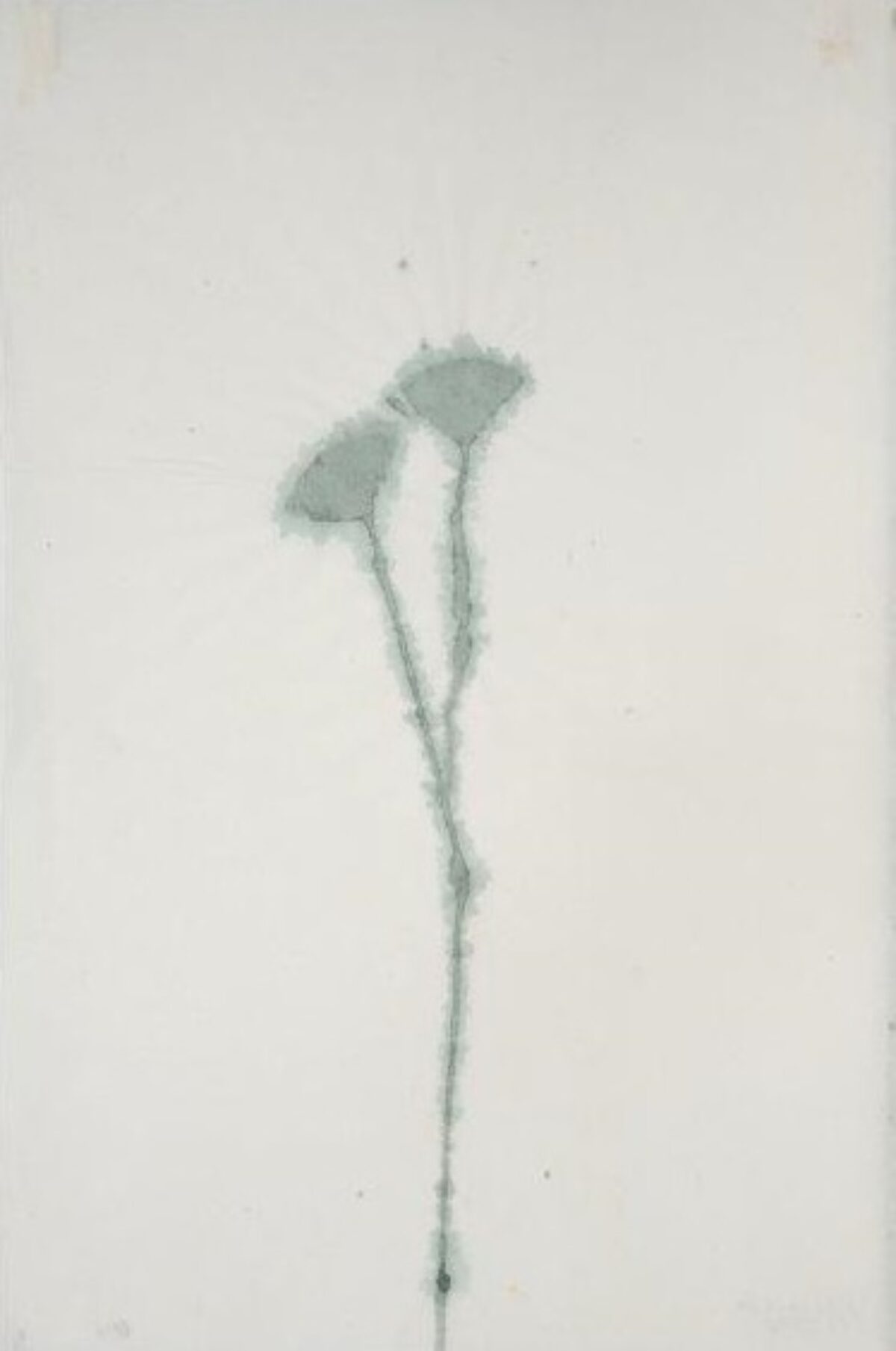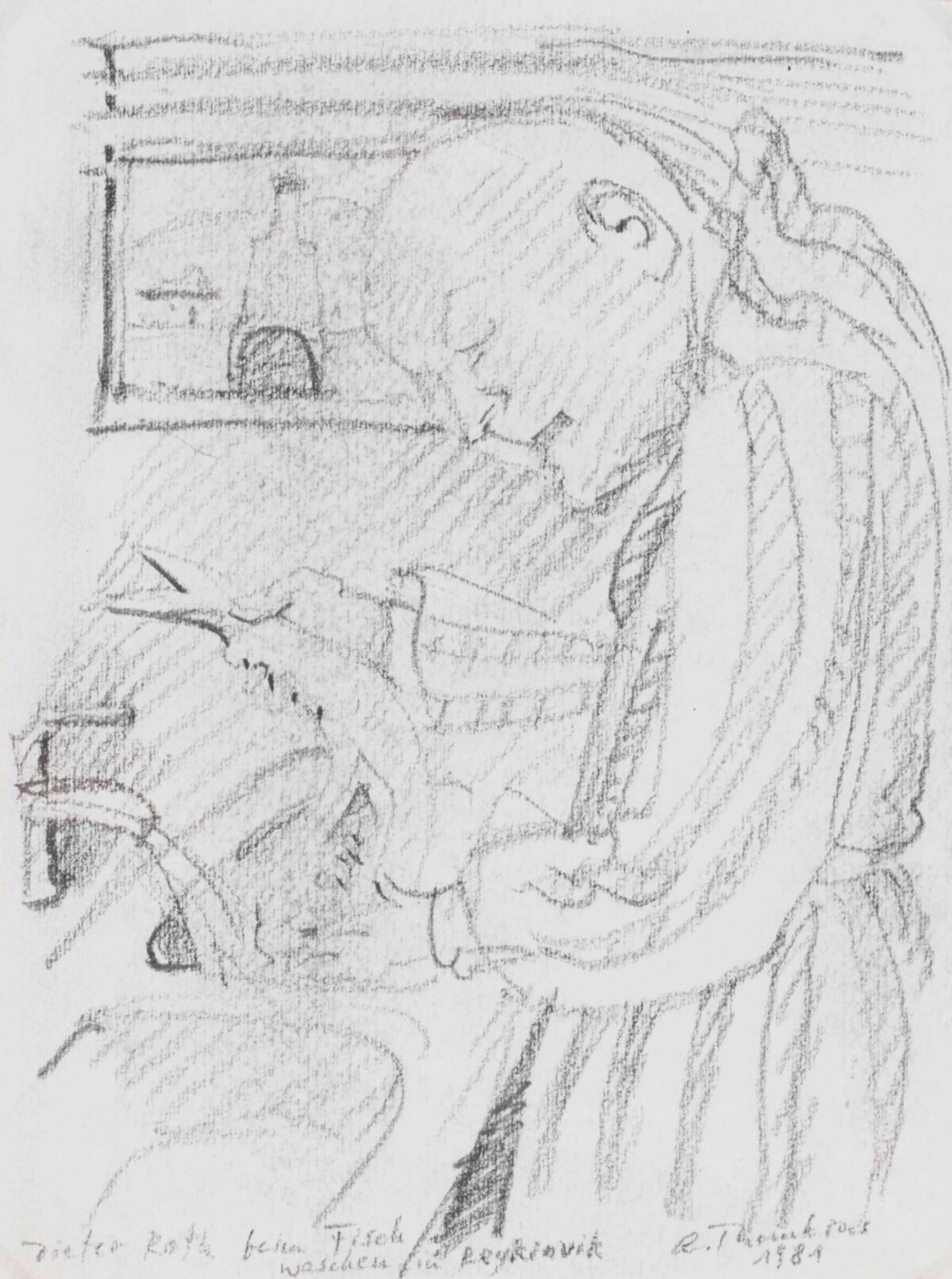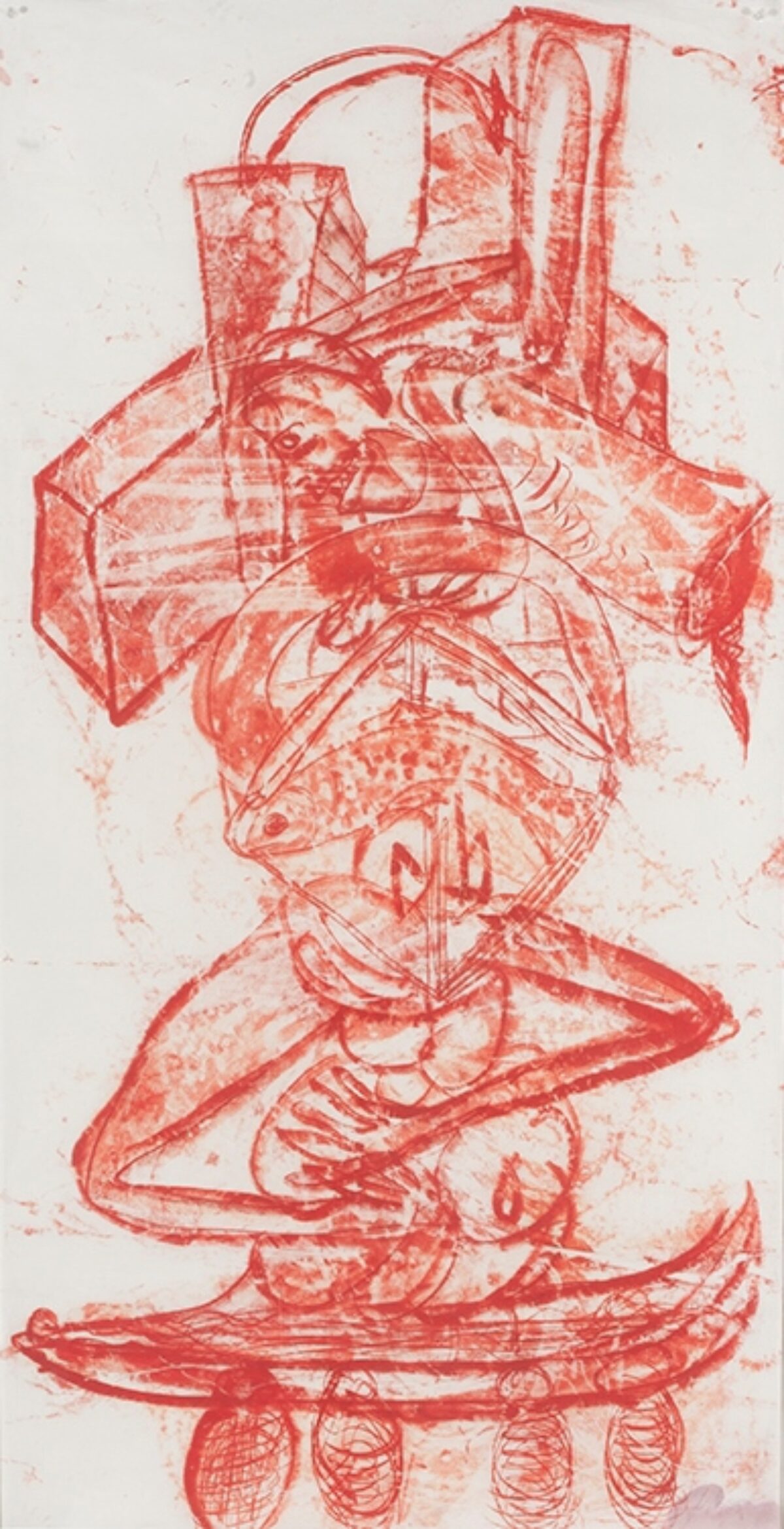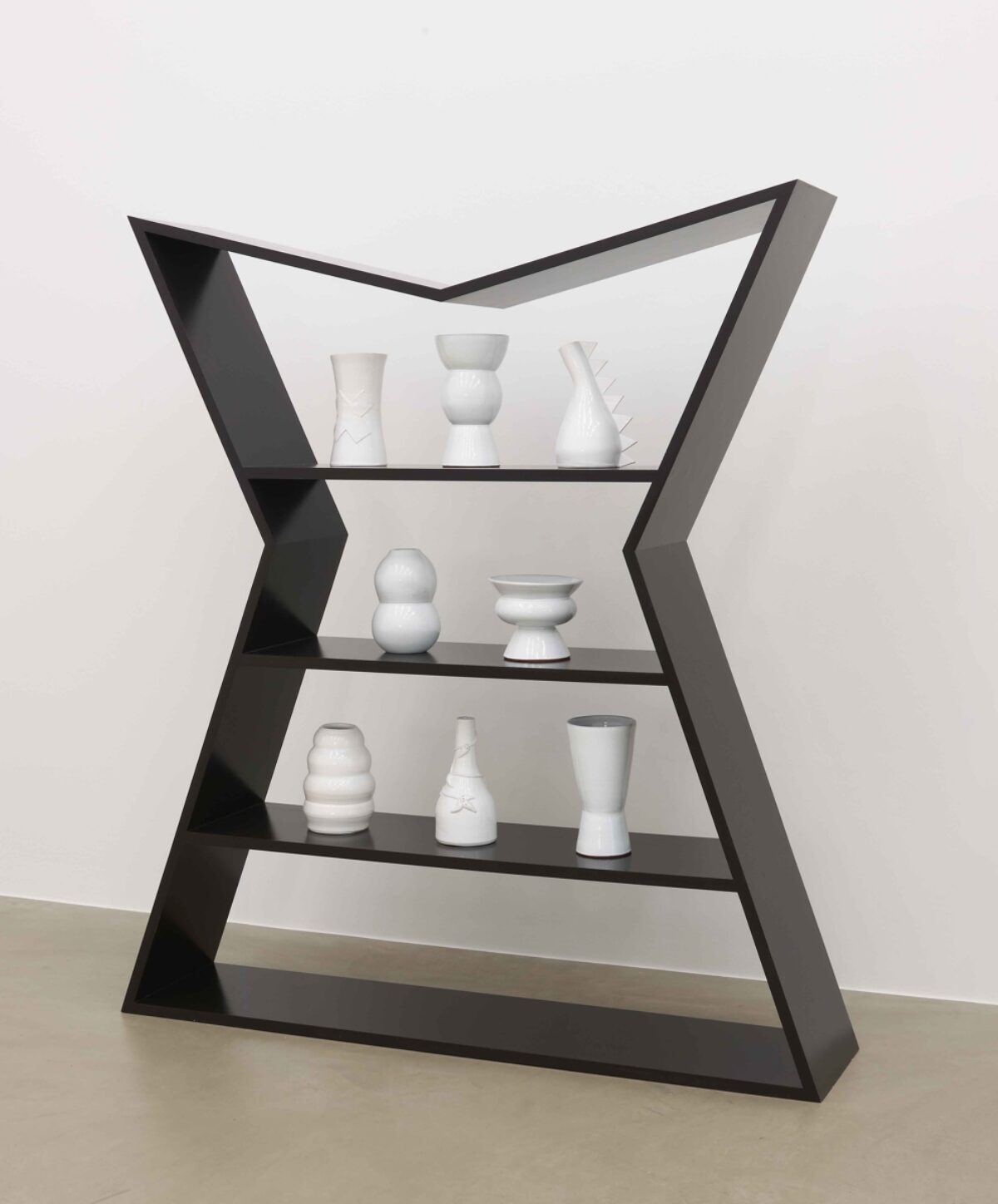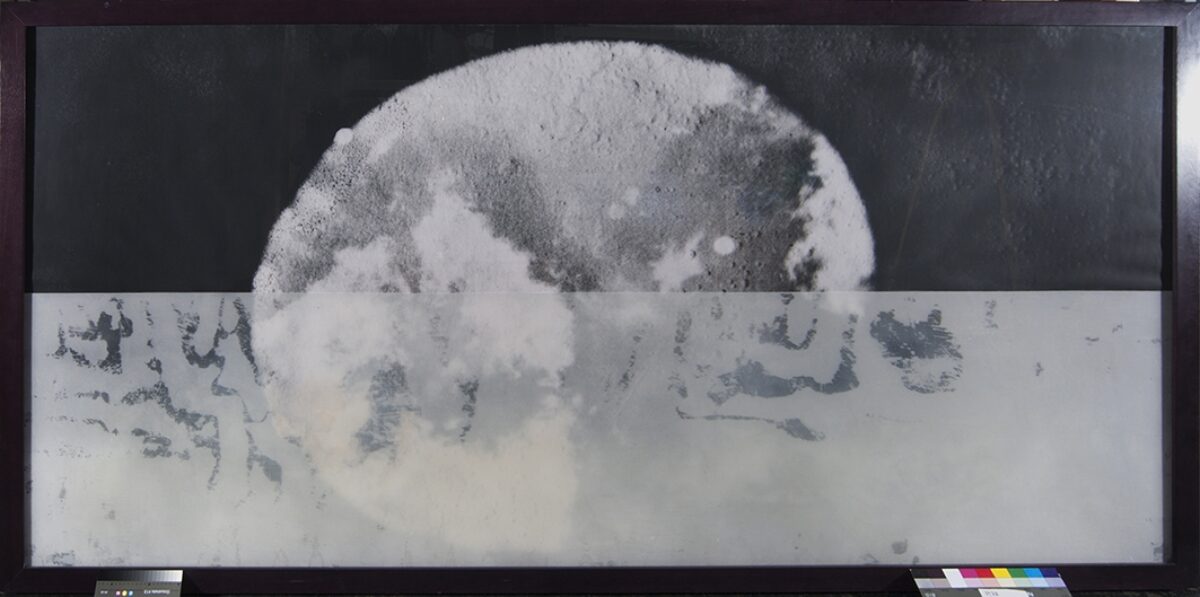
Wachs, Altholz, 224 x 667 x 30 cm, Installation
English, french and italian version below
Ankäufe für die Sammlung stehen oft in Verbindung mit der aktuellen Ausstellungstätigkeit des Aargauer Kunsthauses. Eine wichtige Schweizer Kunstposition wie Ugo Rondinone (*1964) soll somit nicht nur mittels einer temporären Präsentation zur Diskussion gestellt, sondern seinem Werk auch eine dauerhafte Präsenz in unserer Sammlung gegeben werden. So war die grosse Überblicksausstellung „Die Nacht aus Blei“ von 2010 Anlass für den Ankauf von „Diary of Clouds“.
„Diary of Clouds“ ist eine fast sieben Meter breite und über zwei Meter hohe Wandinstallation, bestehend aus einem Holzgestell, in das Skulpturen eingeordnet sind. Das Holz ist verwittert und die rohen Planken, aus denen das Regal gezimmert ist, weisen unterschiedliche Farbschattierungen auf. Daraus ergibt sich ein warmer, fast malerischer Hintergrund für die auf fünf Tablars aufgestellten, wolkenartigen Gebilde. Es sind insgesamt 64 Skulpturen aus hellem Wachs. Die Grössen variieren, die Formen haben jede ihre ganz eigene Ausprägung. So wie die Wolken am Himmel, haben auch diese „Wolken“ ihre jeweils einzigartige Gestalt. Rondinone hatte sie einzeln in Ton geformt und anschliessend in Wachs gegossen. Die Spuren der arbeitenden Hände sind in den Objekten deutlich lesbar.
Bei „Diary of Clouds“ schwingt auf verschiedenen Ebenen eine gewisse Paradoxie mit. So liegt eine Widersprüchlichkeit im Bestreben, die sich in einer ständige Mutation befindliche Form von Wolken „dingfest“ zu machen und festzuschreiben. Als bildliches Phänomen sind Wolken in der Kunst ein vielfältiges Thema, wie es die 2005 im Aargauer Kunsthaus gezeigte Schau „Wolkenbilder“ erlebbar machte.
Dreidimensionale Schilderungen von Wolken sind jedoch selten und finden sich etwa im Werk von Meret Oppenheim (1913–1985), die 1963 in ihrer surrealistisch geprägten Arbeit „Sechs Wolken auf einer Brücke“ wie Rondinone eine Variation von Wolkenformen schuf. Durch die Reihung wird in beiden Werken dem metamorphischen Charakter des Himmelsphänomens Rechnung getragen. Eine Idee von Flüchtigkeit hat der Künstler in seinem Werk durch die Wahl des Materials bewahrt. Wachs, als Rohstoff von Kerzen, bringen wir unweigerlich mit einer gewissen Zeitlichkeit in Verbindung. Zudem ist das Material Wachs tatsächlich relativ fragil und auch dadurch potentiell vergänglich. Im Titel des Werk ist die Zeitlichkeit durch den Begriff des Tagebuchs eingeschrieben. Die Wolken scheinen – so wie Rondinones grosse Serie seiner sogenannten Tagebuchbilder (jedes Werk trägt den Titel des jeweiligen Entstehungstages) (seit 2008) – den Ablauf von Lebenszeit zu repräsentieren.
Ein Blick auf Rondinones gesamtes Schaffen zeigt die Dualität zwischen einer expressiven, haptischen Arbeit einerseits und einem konzeptuellen, kontrollierten Schaffen andererseits. Ungefähr zeitgleich zu „Diary of Clouds“ sind die sogenannten Gelehrtensteine (2009) entstanden, die ebenfalls in der grossen Überblicksausstellung im Aargauer Kunsthaus zu sehen waren. Diese sind das Resultat von computerberechneten, maschinell hergestellten Vergrösserungen von Naturphänomenen. Die Wolken wiederum stehen in einer sehr losen Verbindung zu möglichen Vorbildern in der Natur und sind intuitiv, mit blossen Händen in weichem Ton geformt. Sie sind so Ausdruck nicht nur des Natürlichen sondern auch des Kreativen und – ganz der paradoxalen Grundlinie des Werks folgend – reihen sie sich fein säuberlich geordnet in die Struktur des Holzgestells ein.
Madeleine Schuppli, 2018
***
Acquisitions for the collection are often linked to current exhibition activities of the Aargauer Kunsthaus. Thus, the work of an important Swiss artist like Ugo Rondinone (b. 1962) should not be merely presented for discussion through a temporary presentation, but also given a permanent presence within our collection. And so Rondinone’s major 2010 survey, “The Night of Lead”, prompted the acquisition of “Diary of Clouds”.
Almost seven metres wide and two metres high, “Diary of Clouds” is a wall installation consisting of a wooden rack in which sculptures are shelved. The wood is weather-beaten and the untreated boards the rack is made up of differ in hue. The result is a warm, almost painterly backdrop for the cloud-like objects arranged on five shelves. There are a total of 64 sculptures made of light-coloured wax. Their sizes vary and they each have a very distinct form. Like the clouds in the sky, these “clouds”, too, are each uniquely shaped. Ugo Rondinone modelled them individually in clay and subsequently cast them in wax, with the marks of the artist’s hand left clearly visible in the objects.
A certain paradoxicality comes into play on several levels of “Diary of Clouds”. For example, there is a contradictory quality to the attempt to “arrest” and enshrine the constantly changing shape of clouds. As a pictorial phenomenon, clouds are a multifaceted subject in art, as vividly illustrated by the 2005 exhibition “Cloud Pictures” at the Aargauer Kunsthaus.
Yet three-dimensional renderings of clouds are rare. An example can be found in the work of Meret Oppenheim who in 1963 created a surrealist-informed sculpture entitled “Six Clouds on a Bridge” (“Sechs Wolken auf einer Brücke”) which, like Rondinone’s installation, features a variation of cloud shapes. In both works, the juxtaposition serves to account for the metamorphic character of the celestial phenomenon. In Rondinone’s work, a hint of transience has been preserved through the choice of material: we inevitably associate wax, the raw material of candles, with a certain temporality. At the same time, wax is, in fact, a relatively fragile material and therefore potentially perishable. Temporality is inscribed into the title of the work through the use of the word “diary”. Like Rondinone’s large series of so-called “diary paintings” (which he started in 2008, with each work taking as its title the day of its creation), the clouds seem to represent the passing of lifetime.
When surveying Ugo Rondinone’s oeuvre as a whole, we see a duality between expressive, haptic work and a conceptual, controlled artistic practice. At about the same time as “Diary of Clouds”, Rondinone created his so-called “Scholars’ Rocks” (“Gelehrtensteine”, 2009), which were also included in his major survey at the Aargauer Kunsthaus. These rocks are the result of computer-calculated, machine-made enlargements of natural phenomena. The clouds, on the other hand, are very loosely connected to potential models in nature and have been modelled intuitively, with bare hands, from soft clay. Thus, they are expressive of both the natural and the creative, as they – very much in line with the paradoxical essence of the work – neatly line up within the framework of the wooden rack.
Madeleine Schuppli, 2018
***
Les acquisitions pour les collections se font souvent en lien avec l’agenda des expositions de l’Aargauer Kunsthaus. Le but est non seulement de permettre de débattre d’une importante position artistique suisse telle qu’Ugo Rondinone (*1962) au travers d’une présentation temporaire, mais aussi de donner à son œuvre une présence durable dans nos collections. Ainsi, l’exposition monographique «Die Nacht aus Blei» (La nuit de plomb) en 2010 fut l’occasion d’acquérir «Diary of Clouds».
«Diary of Clouds» est une installation murale de presque sept mètres de long sur plus de deux mètres de hauteur, composée d’une structure en bois dans laquelle sont rangées des sculptures. Le bois est vieilli par le temps et les planches brutes qui ont servi à réaliser le rayonnage présentent des nuances différentes dans les tons. Cela a pour effet d’offrir un arrière-plan chaud, presque pictural aux compositions rappelant des nuages, présentées sur cinq plateaux. Au total ce sont soixante-quatre sculptures en cire claire. Les tailles varient, les formes ont chacune leurs caractéristiques bien personnelles. Tels les nuages dans le ciel, ces «nuages» ont chacun leur forme qui est unique. Rondinone les a façonnés chacun dans la glaise avant de les couler dans la cire. Les traces du travail des mains sont d’ailleurs nettement visibles sur les objets.
Dans «Diary of Clouds» transparaît un certain paradoxe à différents niveaux. Il y a ainsi un caractère contradictoire dans le souci de vouloir capturer et fixer la forme de nuages en perpétuelle mutation. En tant que phénomène pictural, les nuages constituent un thème éclectique dans l’art, comme on pouvait le découvrir lors de l’exposition «Wolkenbilder» (Images de nuages) organisée à l’Aargauer Kunsthaus en 2005.
Les descriptions de nuages en trois dimensions sont toutefois rares. On les trouve par exemple dans l’œuvre de Meret Oppenheim (1913–1985) qui, comme Rondinone, créa un arrangement de nuages de diverses formes dans son œuvre «Sechs Wolken auf einer Brücke» aux accents surréalistes. Dans les deux œuvres, l’alignement permet de prendre en compte le caractère «métamorphique» de ce phénomène céleste. L’artiste a préservé dans son œuvre une idée de fugacité de par le choix du matériau. Matière première des bougies, nous associons inéluctablement la cire à une certaine temporalité. De plus, c’est effectivement un matériau relativement fragile et donc, de ce fait, potentiellement éphémère. Dans le titre de l’œuvre, la temporalité est exprimée par le terme de journal intime. Comme la grande série d’images de journal intime de Rondinone, chaque œuvre portant le titre du jour de création (depuis 2008), les nuages semblent représenter le déroulement de la vie.
Un regard sur l’ensemble de l’œuvre de Rondinone met en évidence la dualité entre un travail haptique, expressif et une création contrôlée, conceptuelle. Environ à la même période que «Diary of Clouds», Rondinone réalise les «Gelehrtensteine» (rochers de lettrés) qui furent également présentés lors de l’exposition monographique à l’Aargauer Kunsthaus. Il s’agit du résultat d’agrandissements de phénomènes naturels, calculés par ordinateur et fabriqués à la machine. Les nuages en revanche ont un lien très vague avec les éventuels modèles de la nature et sont façonnés intuitivement à mains nues dans de la glaise molle. Ils sont ainsi l’expression tant du naturel que du créatif et, dans la droite ligne paradoxale de l’œuvre, s’alignent soigneusement rangés dans la structure du rayonnage en bois.
Madeleine Schuppli, 2018
***










